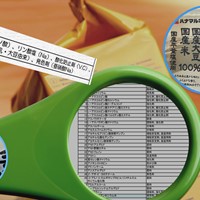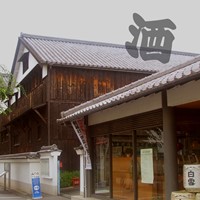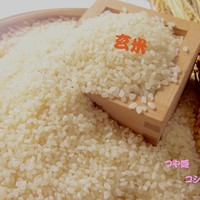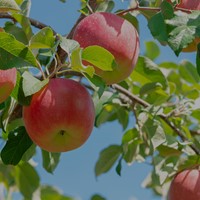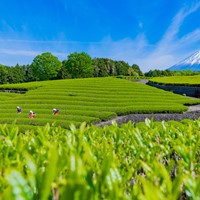Japanese Rice Brands and the Characteristics

This page contains affiliate links.
In Japan, various types of rice are produced to suit the soil, water, and climate of each region. Are you aware of how many varieties of rice there are in Japan? As of the 2024 harvest, there are 934 different varieties of non-glutinous rice (except rice for brewing and glutinous/mochi rice) produced. This article introduces some of the major types of rice and their characteristics. If you would like to learn about types of rice, how to store and more, read this article and how to cook Japanese rice, please read here.
Popular Japanese Rice Varieties

According to the announcement made by the Support Organization for Securing Stable Supply of Rice (公益社団法人 米穀安定供給確保支援機構), released in October 2023, regarding the "Cultivation Trends of Rice Varieties for the Reiwa 4 (2022) Harvest," the cultivation ratios of non-glutinous rice varieties (excluding rice for brewing and glutinous rice) are as follows:
| Rank | Brand Name | Cultivation Ratio | Major Production Area |
| 1 | Koshihikari | 33.4 | Niigata, Ibaraki, Tochigi |
| 2 | Hitomebore | 8.5 | Miyagi, Iwate, Fukushima |
| 3 | Hinohikari | 8.1 | Kumamoto, Oita, Kagoshima |
| 4 | Akitakomachi | 6.7 | Akita, Ibaraki, Iwate |
| 5 | Nanatsuboshi | 3.2 | Hokkaido |
| 6 | Haenuki | 2.9 | Yamagata |
| 7 | Masshigura | 2.4 | Aomori |
| 8 | Kinuhikari | 1.9 | Shiga, Hyogo, Kyoto |
| 9 | Yumepirika | 1.8 | Hokkaido |
| 10 | Kinumusume | 1.8 | Shimane, Okayama, Tottori |
Data source: Support Organization for Securing Stable Supply of Rice
Characteristics of Japanese Rice Varieties
Each rice brand has its unique characteristics, and, just like sports teams, many Japanese locals favor rice from their home region as a matter of principle. Among them, Uonuma-grown Koshihikari is one of the highly acclaimed rice varieties in Japan. Known for its delicious taste nurtured by the unique climate and soil of the Uonuma region. Of course, other regions and varieties of rice also have wonderful flavors and quality, so I recommend trying various types of rice according to your preferences and dishes.
Koshihikari (コシヒカリ)
Known for pairing well with Japanese and Western dishes, Koshikari is Japan's leading rice in production volume and market share. It has a well-balanced taste and is very sticky. Note, however, that this rice might overpower dishes with subtle flavors. Also, it is not suitable for vinegared rice due to its stickiness. It is a little more challenging to make fried rice and mixed rice for the same reason.
Hitomebore (ひとめぼれ)
Hitomebore is popular with the elderly for its soft texture that goes well with light Japanese food. It has the right balance of taste, aroma, and appearance. It is sticky and soft like Koshihikari, but it is not as strong. This rice is easy to match with Japanese food in general, though it is not suitable for side dishes with a strong taste, curry, or vinegared rice.
Hinohikari (ヒノヒカリ)
The characteristic of Hinohikari is that it has a lighter taste compared to Koshihikari. Because the flavor isn't too strong, it pairs well with any dish. It has a good balance of stickiness and fragrance, and it also has elasticity, so even though it's light, it's satisfying to eat.
Akitakomachi (あきたこまち)
When cooked, Akitakomachi’s gloss and luster are good, and the slightly smaller grains are not too soft. It is slightly less sticky and lighter in taste than Koshihikari. Even when eaten cold, the flavor is not spoiled. While it has a chewy texture, it is cooked slightly hard, making it suitable for rice balls, bento boxes, and rice bowls.
Nanatsuboshi (ななつぼし)
Nanatsuboshi is the most popular variety in Hokkaido these days because of its outstanding balance of luster, stickiness, and sweetness. Its grains are firm, and while they are not sticky and smooth, they are characterized by having a moist feeling. Also, it lasts a long time even when cooled, making it ideal for lunch boxes and sushi. Unlike other rice varieties, it can be steamed without rinsing.
Haenuki (はえぬき)
Haenuki rice is characterized by its firm and chewy grains, providing a satisfying texture. It has a moderate sweetness but a light flavor, making it delicious even when cooled down, making it ideal for rice balls and bento boxes.
Hasshigura (まっしぐら)
The characteristics of Masshigura rice include moderate elasticity, low stickiness, firm grains, and a refreshing taste. It has a glossy and white appearance when cooked, with uniform grains, highlighting its visual appeal.
Kinuhikari (キヌヒカリ)
For those who don't like the stickiness and aroma of Koshihikari, this is a typical choice for vinegared rice at sushi restaurants, especially in Japan’s Kansai region. It is silky white and shiny, and has a soft and refreshing texture that does not interfere with the side dish’s taste. It is a little stiff with moderate stickiness and sweetness. Kinuhikari is not only good for sushi, but also for curry and rice bowls. It also has the characteristic of increased sweetness when cooled, making it ideal for bento boxes and rice balls.
Yumepirika (ゆめぴりか)
Yumepirika is characterized by its strong stickiness, sweetness, and softness. If you think that it is overly soft, you can cook it using less water. The grains are crispy and satisfying to eat, and many people eat it plain without side dishes. When cooled, the chewy and grainy texture becomes even more pronounced, making it ideal for rice balls. White and glossy, Yumepirika has the right balance between taste and texture.
Kinumusume (きぬむすめ)
The distinctive feature of Kinumusume lies in its glossiness and whiteness when cooked. When you open the lid of the rice cooker just after cooking, the glossiness and whiteness stimulate your appetite. Additionally, "Kinumusume" is characterized by its sweetness, which persists even when cooled.
Rice Cooking Materials and Comparative Rice Tasting
Click the image(s) to find out more details or purchase online.




























